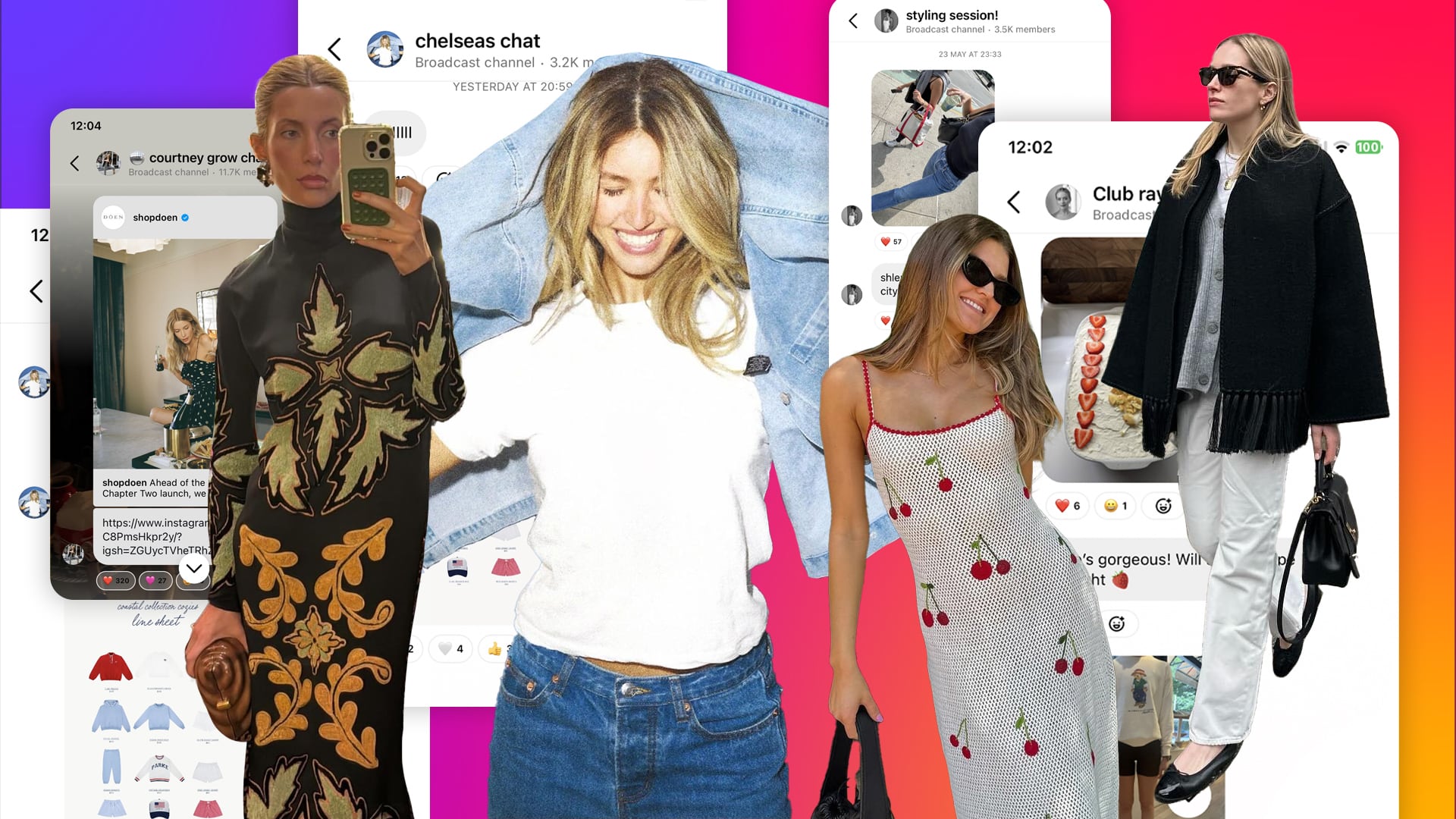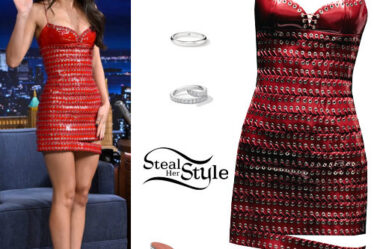
More and more influencers are sliding into their followers’ DMs.
They’re doing so via Instagram’s broadcast channel feature, which was first introduced in February 2023, and essentially acts as a (one-sided) group chat that appears in a user’s direct messages inbox. Any user with over 10,000 followers can create one to share images and text, as well as features like polls and question boxes. Though members can’t respond the way they would in an actual group chat, they can react with emojis.
Broadcast channels were rolled out globally in September 2023, and since then, uptake has picked up. Influencers including Courtney Grow, Mallory Goldman, Megan Roup and Sara Walker have launched channels in recent months, as have founders like Gen-Z favourite fashion company Parke’s Chelsea Kramer, fashion and lifestyle brand Hill House Home’s Nell Diamond and lab-grown jewellery label Dorsey’s Megan Strachan.
In the channels themselves, much of the content influencers share is the same sort that they’d post on Instagram Stories, such as outfit selfies (followed by links to purchase), new online shopping finds or photos from vacation. But because it’s a private channel that you have to elect to join, there’s a sense that the broadcast channels are a gathering place for your most devoted followers.
Brand founders are using them as a place to solicit customer feedback — even if only by emoji. Influencers see broadcasts as a way to connect with followers in a less formal setting. For both, it offers an easier method to respond to the countless direct messages they receive daily.
“It takes the pressure off of making the perfect story or announcing it in the perfect way,” said Goldman. “You can just get the information out quickly.”
But what broadcast channels really do is provide a deeper connection point at a time when brands and creators are seeking new ways to engage with — and reward — their most loyal fans and consumers, whether it’s inviting them to a broadcast channel, rolling out a paid subscription for additional content or offering top customers special perks.
“We’re moving toward this world of creators wanting the same tool sets that marketers might have; to collect email addresses and phone numbers, and just get closer to that direct to fan relationship,” said Krishna Subramanian, co-founder of influencer marketing platform Captiv8. “This is a perfect example of creators getting that opportunity.”
The Need for a ‘Safe Space’
In a world of curated Instagram feeds, broadcast channels — which appear as a direct message in a member’s inbox — offer the opportunity to give followers the casual content they so often crave.
“It’s a little bit more transparent,” said influencer Rachel Cohen Smolyar. “I’ve shared a mirror selfie in the morning where I’m in workout clothes, and I’ll just say ‘This is what I’m actually wearing today.’” The accompanying text, too, she said, can feel like “word vomit,” or more spontaneous and off-the-cuff than what they’d show their wider audience.
Influencers also use the channels as a place to reward their most loyal followers. Goldman said she does so by sharing links to products earlier, hosting giveaways or even uploading a Starbucks gift card so a follower can treat themselves to a cup of coffee. And unlike Instagram Stories, which expire after 24 hours, content in a broadcast channel lives on indefinitely, meaning that the shoppers who are most likely to take an influencer’s recommendations have an easier way to find previously-posted content.
As well, the channel’s privacy can offer a layer of protection from criticism and trolls, particularly when disclosing more personal details.
“People are there because they care about you,” said Goldman. “They’re loyal to you, so you can speak more openly about topics that you wouldn’t necessarily blast to all 100,000 of your followers.”
Brand partners are taking notice of their potential, too: Parke founder Kramer said that for an upcoming sponsored content deal, posting in her broadcast channel was included in the deliverables.
A Testing Ground
Just as influencers are using the channels to present a more candid picture of their day-to-day, so are brand founders. Shrugging off the “girl boss” era of the 2010s, which was defined by glossy success stories plastered on the covers of magazines, they’re using channels to give a more realistic picture of what it means to be an entrepreneur.
“A lot of what we, and what a lot of what consumers saw were perfect founder stories on stage,” said Stratchan. “That’s just not been my experience building a company.”
But the benefits go further than transparency.
As more consumers, particularly Gen-Z, say they want to play a role in building the brands they shop from, broadcast channels offer a way for founders to give their customers a behind-the-scenes peek at product development or marketing photoshoots. They can essentially serve as a focus group for immediate feedback, which can be used to get a sense of demand for a particular product, which can help them determine how much of it to order — or if they should make it at all.
“This generation, right now, all they want to do is be a part of your brand. They want to look at someone and they relate to them in some capacity,” said Kramer. “That’s how I’ve grown the business, is just showing these glimpses of being a brand owner in my 20s.”
It’s still early days for the broadcast channel feature, but already, users have feedback. The most common point of frustration with broadcast channels is that they can feel a bit like the host is shouting into the void or “talking to myself,” as Goldman said, because members can’t reply. The addition of the question box and the ability to react helps, but two-way communication would help increase the feeling of community within the channel, they say.
Instagram, for its part, seems open to evolving broadcast channels. Just this month, it introduced new features, including allowing channel leads to select their own image to serve as the channel’s “background,” giving leads the ability to host Instagram Lives specifically for their channel members and providing QR codes that link back to the host’s main feed.
“This really has to evolve into either [allowing] additional feedback to the creator or they will think about if there is another medium or platform that allows that to happen,” said Subramanian.



